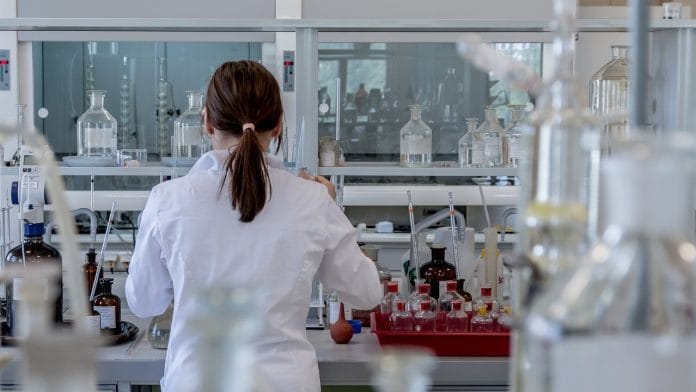Bengaluru: Just as The Lancet stoked hope around the world with the results of the Oxford-AstraZeneca Covid-19 vaccine trials, two other candidates spelt optimism too — those being developed by Pfizer Inc-BioNtech SE and Moderna.
While the Oxford-AstraZeneca trial is believed to be more robust with more participants, analysts have pointed to concerns about whether their vaccine can match its competitors.
Their primary contention is that the other vaccine candidates showed antibody levels higher than the Oxford vaccine (AZD1222) did when compared to recovering patients.
Here’s how Pfizer-BioNtech and Moderna stack up, and how they compare to the AstraZeneca-Oxford vaccine.
Also Read: What are human challenge trials — the experiment Oxford is considering for its Covid vaccine
Pfizer-BioNtech’s BNT162b vaccine
US firm Pfizer and German BioNtech are collaborating on a vaccine that underwent simultaneous combined phase 1/2 trials in the US and Germany.
The German trials of the BNT162b1 vaccine candidate, developed by BioNTech RNA Pharmaceuticals, Shanghai Fosun Pharmaceutical and Pfizer, just concluded.
The findings were uploaded as a pre-print (not peer-reviewed yet) Monday. Like AZD1222, the BNT162b1 vaccine candidate too elicited strong and favourable antibody and T cell responses in 65 candidates.
The US trials are showing positive results as well as preliminary data from the 45-member study, released earlier this month, showed antibody response.
Pfizer and BioNTech were granted an FDA fast-track for two of their investigational vaccines, BNT162b1 and BNT162b2, which would facilitate expedited development and review.
Additionally, the UK has ordered 30 million doses of whichever candidate works, with the procurement subject to clinical results. This caused the stocks of both companies to surge Monday.
The BNT162b1 vaccine is an mRNA vaccine — mRNA or messenger RNA are those molecules that tell cells what to produce or build. While traditional vaccines often work by inserting a weakened form or a part of the virus into the body, mRNA vaccines simply use RNA that tell the body to produce specific kinds of antibodies.
The vaccine is created by using a synthetic version of the mRNA that the coronavirus uses. When the mRNA is delivered inside the body, the cells read it like a template and build a viral protein similar to the actual virus. These cannot become a virus as they lack everything else required in a viral structure. However, the immune system detects this protein and immediately produces antibodies to it.
Also Read: Why we should not hype the hope for the Oxford-AstraZeneca Covid vaccine
Moderna’s mRNA-1273
Moderna’s mRNA-1273, also an mRNA vaccine, was developed in the US and will commence Phase 3 trials on 27 July. It will enrol 30,000 participants in the US, and the trial will continue until 27 October.
It will be performed in partnership with the National Institute of Allergy and Infectious Diseases (NIAID) of the US government’s National Institutes of Health (NIH).
The vaccine is also undergoing Phase 2a testing (used to determine dosage), which will be followed by 2b testing (to determine efficacy) with 600 participants.
The vaccine candidate’s 45-participant Phase 1 study was conducted in the US. Preliminary findings published earlier this month in the New England Journal of Medicine showed that all participants produced antibodies with three different dosages. However, there were strong side-effects, which increased in severity with dosage.
Moderna’s stock climbed 5.5 per cent when the company announced it will tie up with the European pharmaceutical company Laboratorios Farmaceuticos ROVI to manufacture the vaccine. The shares rose again when analysts expected FDA approval for the vaccine. The shares of the company, which has no approved drugs so far, have risen 385 per cent this year.
However, the shares started to fall rapidly after it got its second downgrade from a JP Morgan analyst who opined it was neutral rather than overweight. Monday’s results on the Oxford, CanSino (a Chinese candidate), and Pfizer-BioNtech vaccines also contributed to the declining share prices.
Also Read: Two shots of Covid vaccine may be better than one, but that makes it all very complicated
How Oxford-AstraZeneca vaccine fares
While both the Pfizer-BioNtech and the Moderna vaccine candidates produced similar results as the Oxford-AstraZeneca one in Phase 1, the Moderna candidate has an established safety record, and large-scale trials with over 10,000 participants are already underway.
The Oxford Phase 1 study was more robustly designed with a higher sample size of 1,077 participants.
Additionally, the Oxford vaccine will be manufactured by the British-Swedish pharmaceutical company AstraZeneca as well as the Pune-based Serum Institute of India (SII), both of which have started producing the vaccine.
AstraZeneca plans to produce 2 billion doses and is armed with an agreement to supply 400 million doses to the EU. Serum Institute of India, the largest vaccine manufacturer in the world, has also agreed to produce one billion doses of the vaccine, priced for low- and middle-income countries.
The Oxford vaccine is a viral vector vaccine, where the spike protein of the coronavirus is inserted into a common cold-causing adenovirus.
The developers of the Oxford vaccine have indicated they will commence human challenge trials, which will greatly expedite the vaccine developmental process. Trials for the vaccine are expected to commence in India in August.
Also Read: Made-in-India Covid vaccine likely by early 2021, Zydus Cadila chairman Pankaj Patel says






